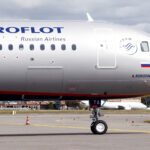
Chaos has gripped the skies over the United Kingdom as a comprehensive “network-wide” computer failure struck the national air traffic control systems. With a multitude of flights delayed both inbound and outbound, the issue has rippled across the UK’s airspace, leaving passengers stranded and airlines grappling to mitigate the fallout.
A sweeping computer glitch has cast a shadow over hundreds of flights, resulting in substantial delays that have left passengers bracing for hours-long wait times. Reports indicate that the fault is significantly disrupting the operations of London Heathrow, the nation’s busiest airport, where very few planes have managed to take off since the onset of the issue. Meanwhile, incoming short-haul flights have been grounded, awaiting further instructions.
Nats Struggles to Restore Normalcy
Nats, the national airspace controllers, issued a statement acknowledging the technical hiccup and revealing the implementation of traffic flow restrictions to ensure safety. Engineers are working relentlessly to identify and rectify the fault, as the air traffic control system navigates through turbulent times.
“We apologise for any inconvenience this may cause,” a Nats spokesperson expressed, echoing the sentiments of both the aviation authority and passengers who find themselves caught in the turmoil.
Impact on Air Travel Ecosystem
The fallout from this unexpected disruption cascades across the spectrum of air travel. British Airways, one of the UK’s premier airlines, communicated to its passengers that flight schedules were being disrupted. Collaborating closely with Nats, the airline aims to stay abreast of the evolving situation, offering timely updates to its passengers.
Smaller carriers like Loganair have not been immune to the issue. The regional Scottish carrier took to social media to warn customers about the network-wide failure, illustrating the extent of the chaos even for regional flights. The potential impact on international travel has raised concerns about delays reverberating across borders.
The implications of these delays cut across personal journeys, business trips, and even sporting events. Frustration has escalated for travellers returning from the World Athletics Championships in Hungary, who now find themselves ensnared in the chaos.
BBC presenter Gabby Logan’s poignant message on social media captured the emotional toll of the situation. “After almost 3 weeks away from home I am hours from hugging my family. And have just been told UK airspace is shut. We could be here for 12 hours. So we sit on the plane and wait.”
As engineers at Nats labor against the clock to rectify the technical blunder, the aviation industry collectively holds its breath. The memory of a 2014 computer glitch at the control centre in Swanwick, which led to extensive flight disruptions, lingers as a stark reminder of the stakes at hand. The urgency to resolve this issue is paramount, as prolonged outages could potentially result in widespread cancellations and extensive disruptions.
The current upheaval in the UK’s air traffic services underscores the fragility of modern aviation’s reliance on technology. As the aviation community navigates through the storm, passengers, airlines, and authorities alike are reminded of the intricate dance between technological advancements and their vulnerabilities. In the interim, a collective hope resonates – that engineers will swiftly restore the skies to their familiar order, enabling flights to soar once again and travellers to reach their destinations without further hindrance.
Discover more from TechBooky
Subscribe to get the latest posts sent to your email.






